When schools closed to in-person learning in March of 2020, UP for Learning’s Youth Advisory Council (YAC) continued to meet regularly. We wanted to check-in and dialogue about their experiences and the experiences of their peers. Through these conversations, it became clear that it was important to understand how youth across Vermont were experiencing their new reality of the pandemic.
The YAC put out a survey in Spring of 2020. In it, we asked Vermont middle and high school youth what support they needed during full remote learning.
What was the purpose of the survey?
Why did we want to gather this data?
What rose to the top were:
- social connections
- academic support and
- access to resources and information.
We then connected with youth across the state to support their needs throughout the remainder of the academic year.
The YAC also wanted to revisit Vermont’s youth needs as we moved from full remote to hybrid to full in-person learning and sent a new survey out in winter of 2021. The main purpose of this survey was to gather data about what was learned during the 2020-2021 academic year and what opportunities arose for change.
Youth responded from 14 different communities across Vermont, as well as youth who were engaged in the Virtual Learning Academy.
Findings from the Survey
Link to the full .pdf in Google Drive
What are our initial reactions to the data?
Evelyn: My initial reaction was that it was interesting to see how my reality and understanding and adaptation to learning during the pandemic mirrored the experience of many other youth across the state. More specifically, I have been struggling with my sense of engagement and mental health; hearing that other youth are identifying these as opportunities as well makes me believe that we can begin to create real, systemic change as we re-enter full in-person learning.
Lindsey: My initial reaction to the data was that what was already known about what does not work for ALL youth in the educational system became even more abundantly clear. It really just put an exclamation point on it. Youth want an education that is built on deep relationships, engaging learning opportunities and time to care for all of their developmental needs: social/emotional, physical and cognitive.
What stood out as a major takeaway?
For both of us, what stood out was the lack of knowledge about, or experience with, social emotional learning. In our minds, this was the opportune time to create opportunities for more in depth community-building, prioritizing young people’s social emotional needs during such an uncertain year.
The potential for changing school schedules in particular, struck YAC student member Galen. He put it this way:
“I love how tactile that feels? It feels like something we can do, like, right now. Get it done, and make change. I think sometimes we almost get lost in like, the systems thinking. I think people often talk about making change but it’s hard to find concrete ways to do it sometimes? And I love that we’ve kind of put a name to that. Like, here’s something we can do to make change… right now.”
Harnessing the power of community
The YAC also gathered with community members to look at this data. And from there, we worked together in small, deeply connecting groups to draw conclusions from it as to how best to move forward.

How do we make sure we take these lessons and move them forward instead of going back to the status-quo?
This is a quote that resonates with us from adrienne maree brown, author of Emergent Strategy: Shaping Change, Shaping Worlds. She writes that “How we live and grow and stay purposeful in the face of constant change actually does determine both the quality of our lives, and the impact that we can have when we move into action together.”
Purpose. Trust. Relationships. What if we designed our work around our values? What would we need to change individually and collectively?
Where do we go from here?
To end our community session, we created a Jamboard, and asked attendees to fill it out. To guide them, we asked simply, “How do we make sure we take these lessons and move them forward instead of going back to the status quo?”
These are their responses.
- “We have to listen.”
- “Later start to the day.”
- “Continue to provide the community connections and build on them.”
- “Listen to students! Make change with them, not to them.”
- “Were students able to do more self-designed learning? If yes, can this continue?”
- “Feels like VT AOE and legislators need to continue to hear from VT youth!”
And we ask you the same question.
Educators, students, and community members,
“How do we make sure we take these lessons and move them forward instead of going back to the status quo?”
We would love to hear from you.
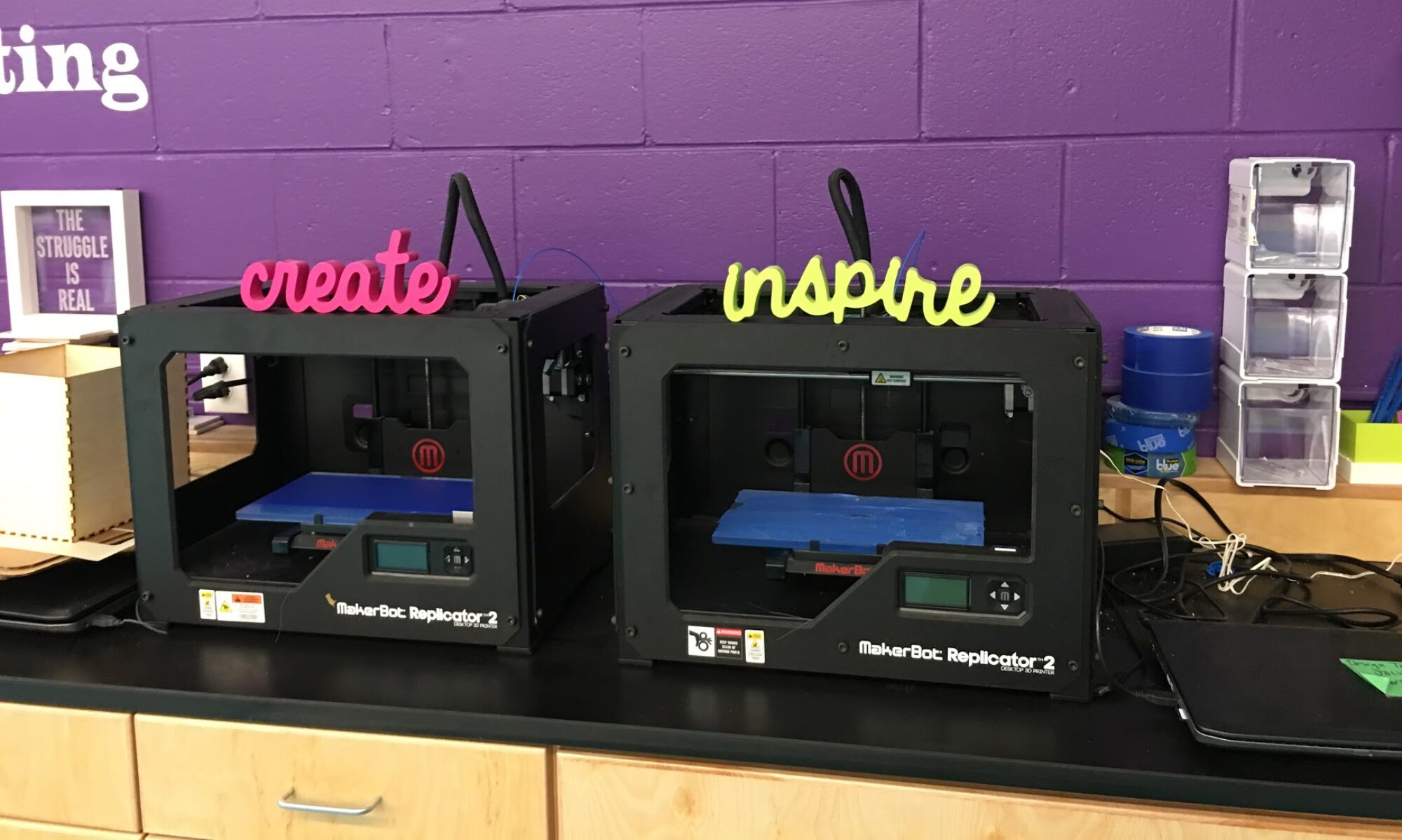

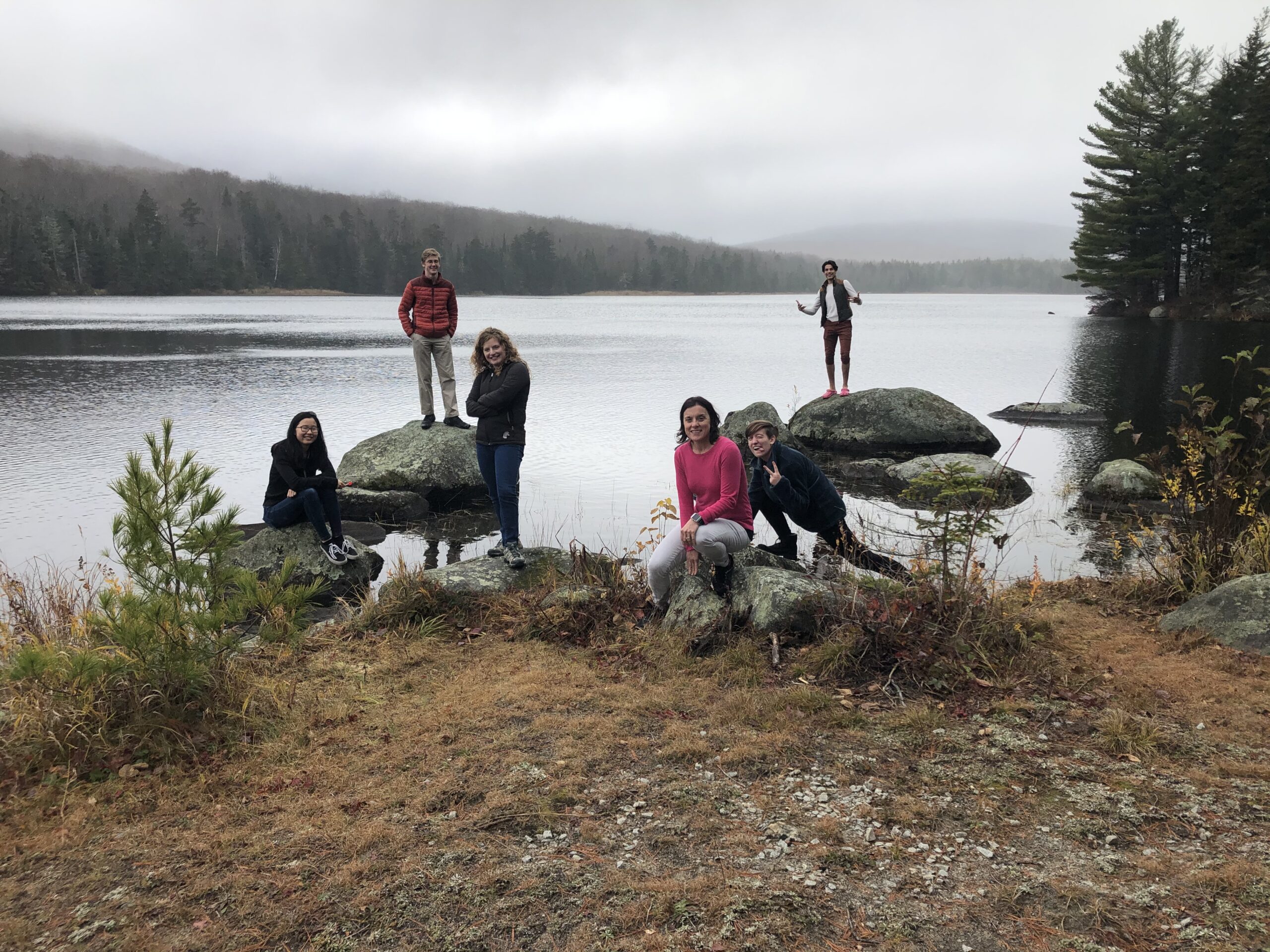
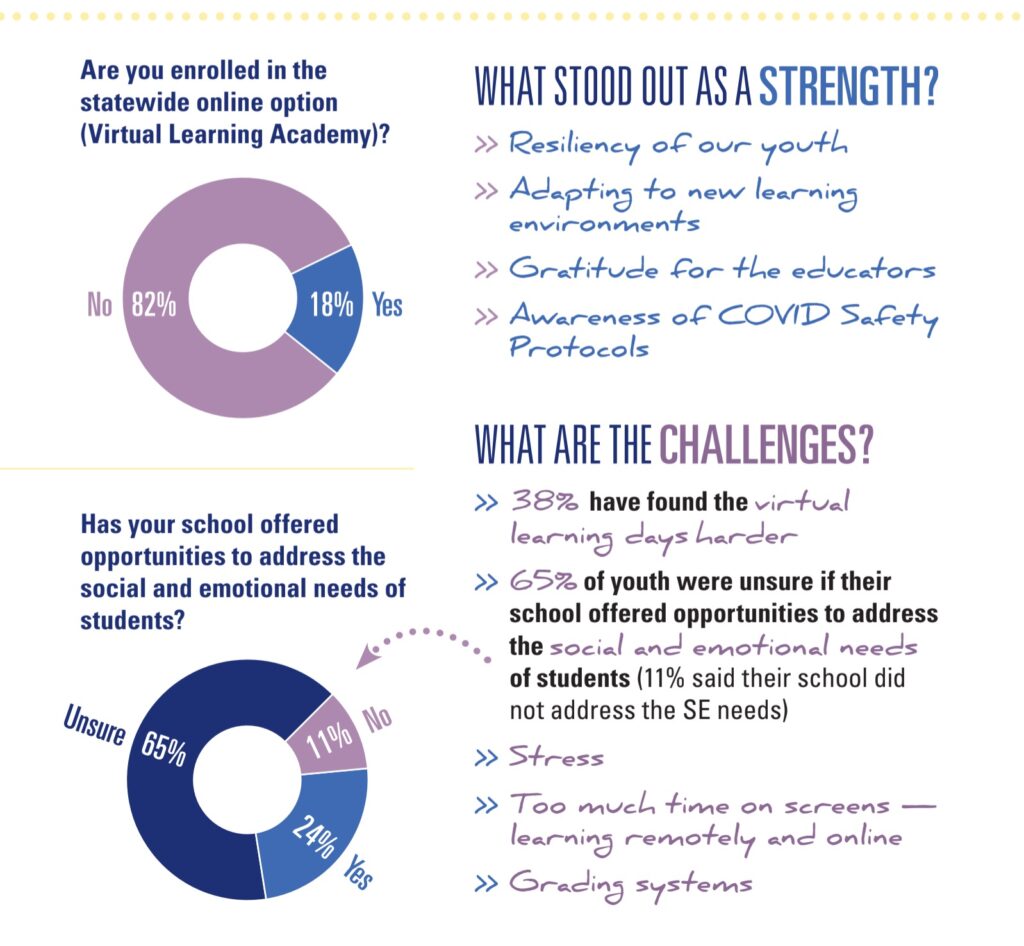
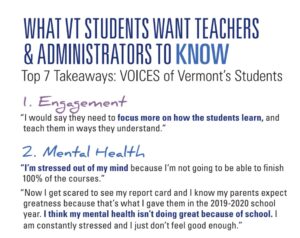
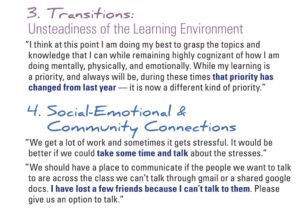
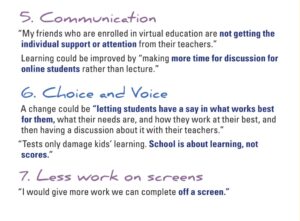
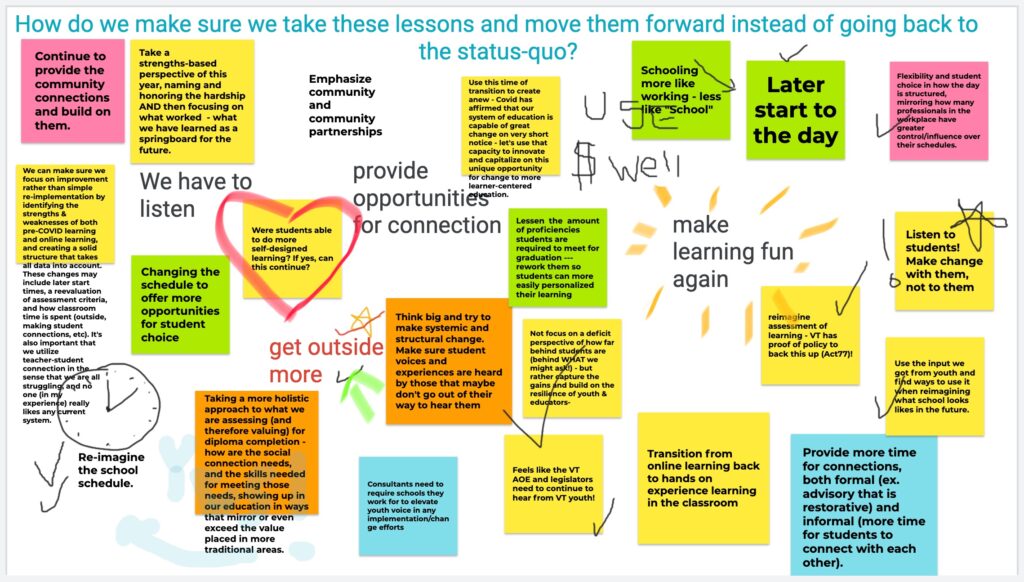
I wonder of the 38% that found completely virtual “harder” how many were challenged by a complicated LMS, how many were challenged by an out of school learning environment that wasn’t supportive of virtual learning(equity issue).